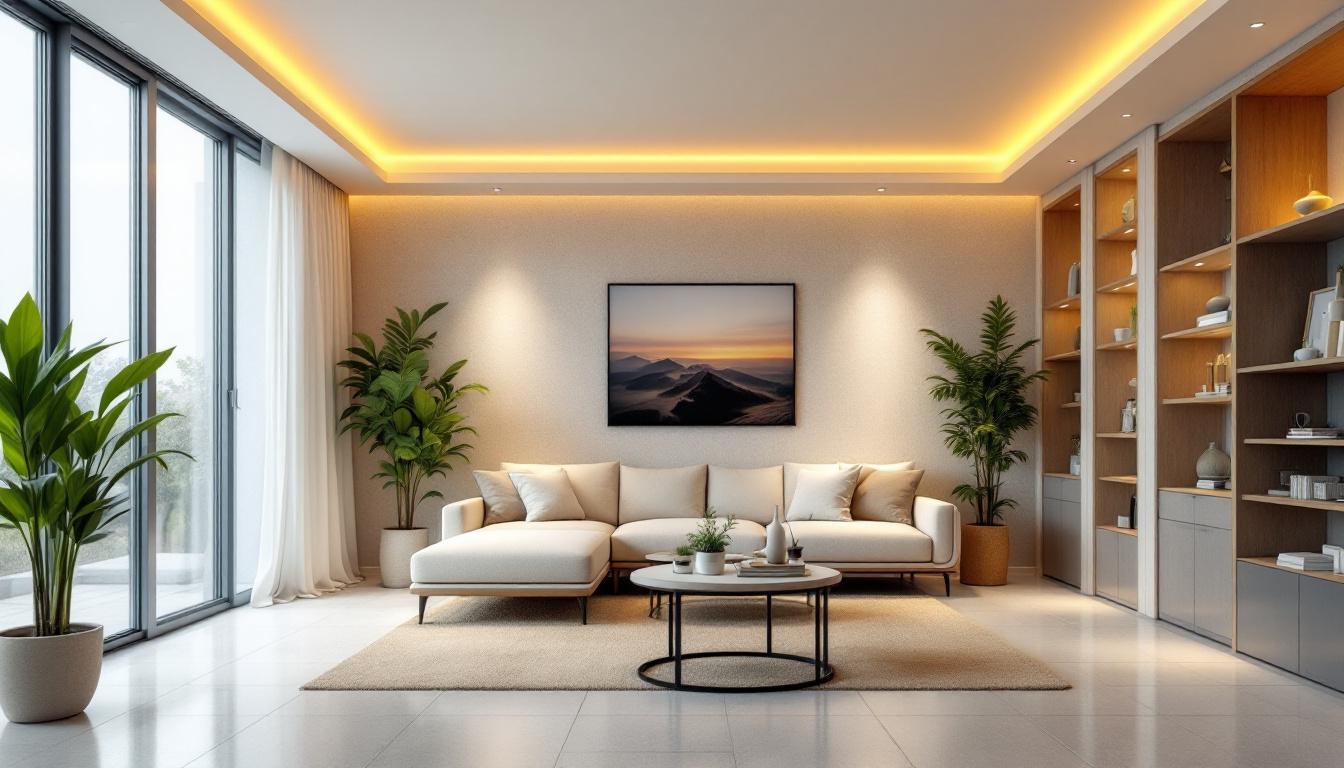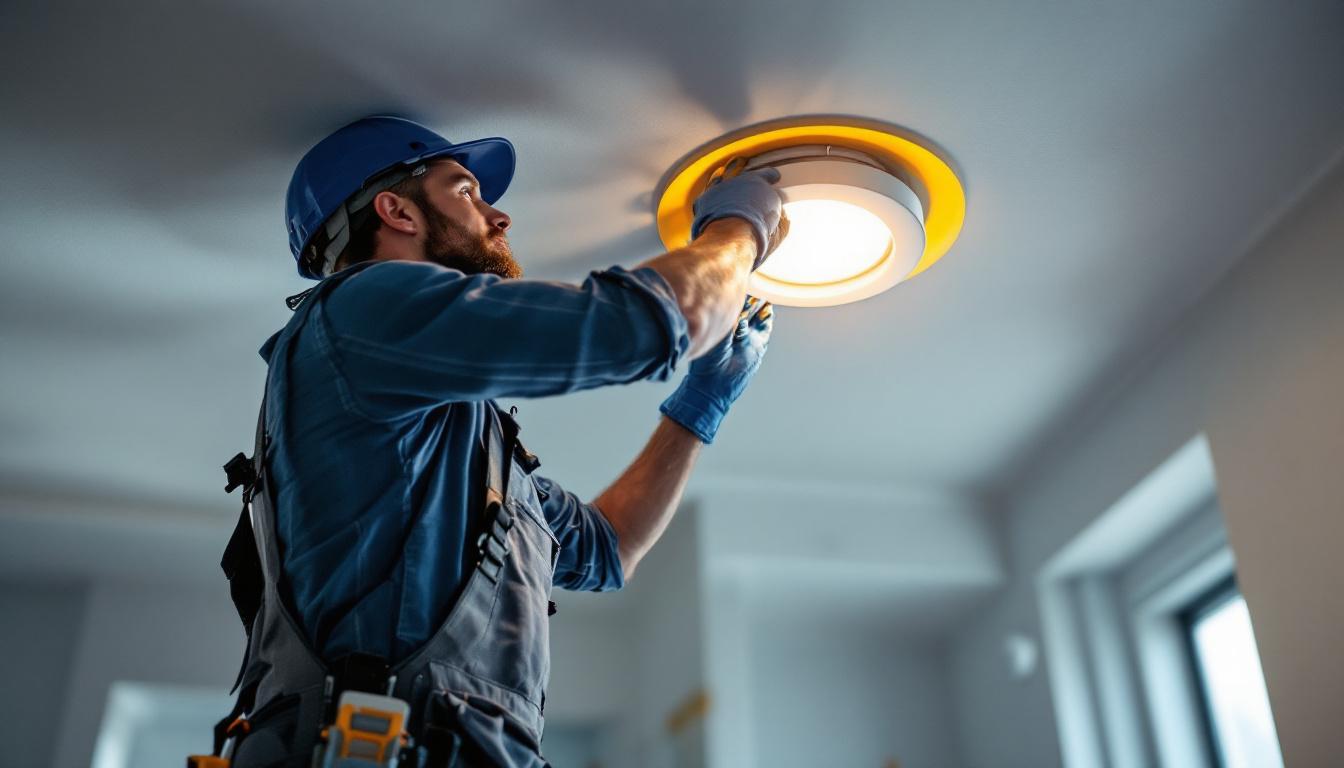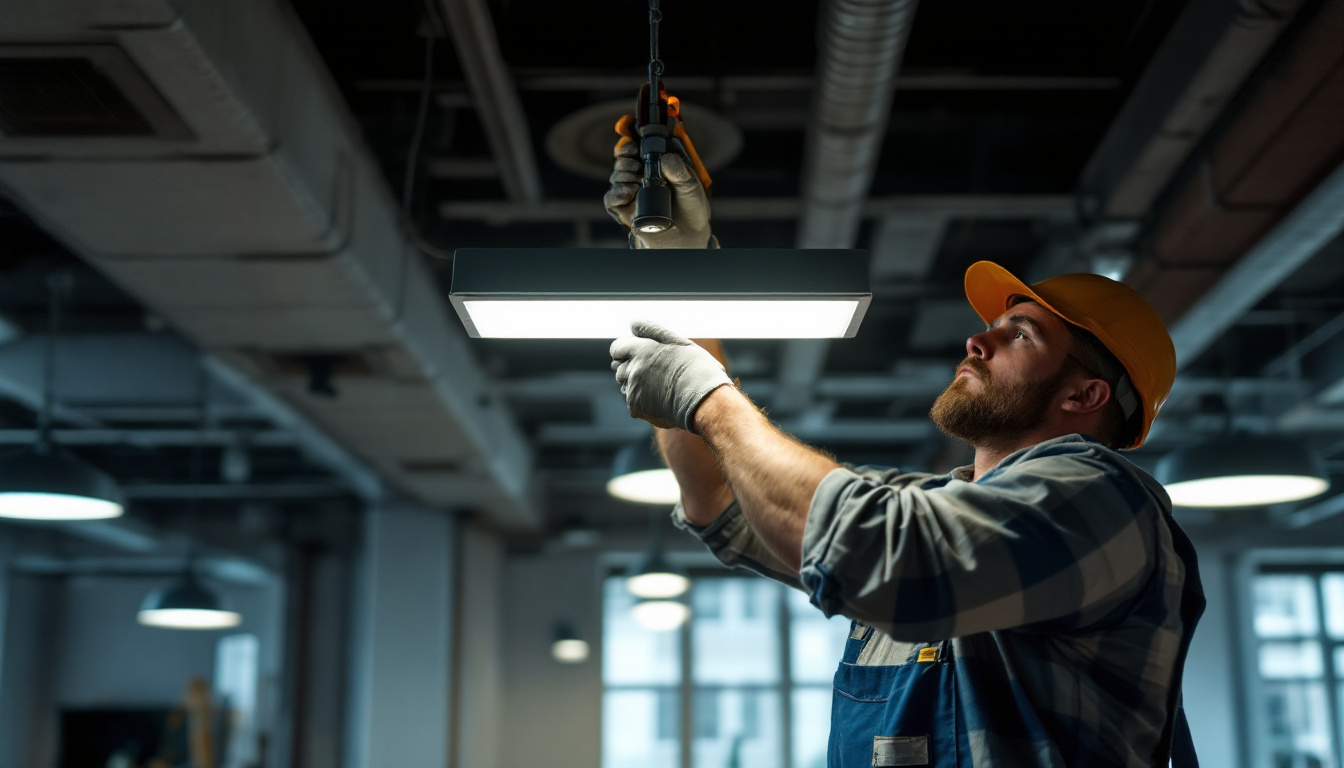
Recessed LED retrofits have become a popular choice for both residential and commercial lighting solutions. These fixtures provide an efficient and aesthetically pleasing way to upgrade existing lighting systems without the need for extensive renovations. By simply replacing outdated bulbs and fixtures with LED technology, contractors can offer clients a modern solution that enhances the overall ambiance of a space.
One of the primary advantages of recessed LED retrofits is their energy efficiency. Compared to traditional incandescent or fluorescent lights, LEDs consume significantly less power while delivering the same or even better light output. This not only reduces energy costs but also contributes to a lower carbon footprint, aligning with the growing demand for sustainable building practices.
Incorporating recessed LED retrofits into lighting designs offers numerous benefits. First, they provide a sleek and unobtrusive appearance, making them ideal for various settings, from residential homes to corporate offices. Their ability to blend seamlessly into ceilings allows for a clean, modern look that enhances any interior design.
Moreover, LED technology boasts a longer lifespan than traditional lighting options. This longevity translates to reduced maintenance costs and fewer replacements over time, making them a cost-effective choice for clients. Additionally, many LED retrofits come with dimming capabilities, allowing for customizable lighting that can adapt to different moods and activities.
Another significant advantage of recessed LED retrofits is their versatility in application. They can be used in various settings, including kitchens, living rooms, hallways, and even outdoor spaces, providing focused lighting where it is needed most. Furthermore, the availability of different color temperatures allows homeowners and designers to select the perfect hue to complement their decor, whether it’s a warm, inviting glow for a cozy living room or a bright, cool light for a workspace.
In addition to their aesthetic and functional benefits, recessed LED retrofits also support advanced smart home technologies. Many modern LED fixtures can be integrated with smart home systems, enabling users to control lighting remotely through mobile apps or voice commands. This not only enhances convenience but also allows for energy monitoring and scheduling, further optimizing energy use and contributing to a more sustainable lifestyle.
Selecting the appropriate recessed LED retrofit involves understanding the specific needs of the space and the preferences of the client. Factors such as color temperature, beam angle, and lumen output play crucial roles in achieving the desired lighting effect.
Color temperature is particularly important, as it affects the ambiance of a room. Warmer tones (around 2700K) create a cozy atmosphere, ideal for living spaces, while cooler tones (5000K and above) are more suitable for work environments where clarity and focus are essential. Additionally, the choice of color temperature can influence how colors appear in the space; for instance, warmer lights can enhance the richness of wood tones and textiles, while cooler lights can make spaces feel more modern and vibrant.
Beam angle is another critical factor to consider. A narrow beam angle is perfect for highlighting specific features, such as artwork or architectural details, while a wider beam angle provides general illumination for larger areas. Understanding the intended use of the space will help in selecting the right beam angle for optimal lighting performance. For example, in a gallery setting, a narrow beam angle can create dramatic lighting effects that draw attention to individual pieces, whereas in a conference room, a wider beam angle ensures that all participants receive uniform lighting, promoting engagement and productivity.
Lumen output measures the brightness of the light emitted by the fixture. It’s essential to balance lumen output with energy efficiency to ensure that clients receive adequate lighting without excessive energy consumption. Many LED retrofits offer high lumen output while maintaining low wattage, making them an ideal choice for energy-conscious clients. Furthermore, considering the lifespan of the LED fixtures is crucial; many modern LEDs can last up to 25,000 hours or more, which not only reduces maintenance costs but also contributes to sustainability efforts by minimizing waste. Clients can enjoy peace of mind knowing that their lighting choices are both effective and environmentally friendly.
Moreover, it’s beneficial to explore the dimming capabilities of recessed LED retrofits. Dimmable options allow for greater flexibility in adjusting the light levels according to the time of day or specific activities, enhancing the overall functionality of the space. For instance, in a home theater, the ability to dim the lights can create an immersive viewing experience, while in a kitchen, brighter lighting can be used during meal prep and softer lighting during casual dining. This adaptability not only improves the usability of the space but also adds a layer of sophistication to the lighting design.
The installation of recessed LED retrofits can be straightforward, but it requires careful planning and execution. Properly assessing the existing fixtures and ensuring compatibility with the new LED units is crucial for a successful retrofit.
First, contractors should evaluate the current housing and wiring to determine if any modifications are necessary. In some cases, additional support may be needed to accommodate the new fixtures. Following this assessment, the old bulbs and trim can be removed, making way for the new LED retrofit kits.
1. **Turn Off Power**: Safety is paramount. Always ensure that the power to the existing fixtures is turned off before beginning any work.
2. **Remove Old Fixtures**: Carefully take out the existing bulbs and trim. Depending on the design, this may involve unscrewing or unclipping components.
3. **Install Retrofit Kit**: Follow the manufacturer’s instructions to install the new LED retrofit kit. This typically involves connecting wiring and securing the fixture in place.
4. **Test the Installation**: Once installed, restore power and test the new lighting to ensure everything functions correctly. Make adjustments as necessary to achieve the desired lighting effect.
Beyond functionality, recessed LED retrofits can significantly enhance the aesthetics of a space. The ability to create layers of light through strategic placement can transform an ordinary room into a visually appealing environment.
Using recessed lighting to highlight architectural features, artwork, or specific areas within a room can create focal points that draw the eye. Additionally, incorporating dimmable LEDs allows for flexibility in mood setting, enabling clients to adapt the lighting to various occasions.
As previously mentioned, the color temperature of recessed LEDs plays a vital role in setting the mood. For instance, warm white lights can make a space feel inviting and comfortable, while cooler tones can energize and stimulate productivity. By understanding the psychological effects of color temperature, contractors can guide clients in making informed decisions that enhance their living or working environments.
Layered lighting is a design technique that combines different types of lighting—ambient, task, and accent—to create a well-rounded illumination scheme. Recessed LEDs can serve as the ambient lighting base, while additional fixtures like pendant lights or wall sconces can provide task and accent lighting. This approach not only improves functionality but also adds depth and interest to the overall design.
One common challenge is dealing with existing ceiling structures. In some cases, the ceiling may not be conducive to retrofitting, requiring additional modifications or support. Additionally, ensuring that the new fixtures are compatible with the existing electrical systems is crucial to avoid any performance issues.
Compatibility issues can arise when retrofitting older fixtures with modern LED technology. It is essential to check the specifications of both the existing housing and the new LED units to ensure they can work together seamlessly. In some instances, a complete replacement of the housing may be necessary.
Another challenge is managing client expectations regarding the final outcome. Clear communication about what recessed LED retrofits can achieve, as well as any limitations, is vital. Providing clients with visual examples or mock-ups can help them understand the potential transformation and avoid disappointment.
The lighting industry is continually evolving, with new technologies and trends emerging regularly. Staying informed about these advancements can help contractors provide cutting-edge solutions to their clients.
One notable trend is the integration of smart technology into recessed LED fixtures. Smart lighting systems allow users to control their lighting remotely, adjust color temperatures, and set schedules, all through a smartphone app or voice commands. This level of control enhances convenience and energy efficiency, making it an attractive option for tech-savvy clients.
As sustainability becomes increasingly important, manufacturers are focusing on improving the energy efficiency of LED products. Innovations in design and materials are leading to even lower energy consumption without sacrificing performance. Contractors should stay abreast of these advancements to offer clients the most efficient and eco-friendly options available.
Customization is another trend gaining traction in the recessed LED market. Clients are looking for lighting solutions that reflect their personal style and preferences. Offering a range of trim styles, colors, and finishes can help contractors cater to diverse tastes and create unique lighting designs that resonate with clients.
Recessed LED retrofits present a valuable opportunity for lighting contractors to enhance their service offerings and meet the evolving needs of clients. By understanding the benefits, installation processes, and design possibilities associated with these fixtures, contractors can leverage recessed LED technology to create better lighting solutions.
As the demand for energy-efficient and aesthetically pleasing lighting continues to grow, staying informed about trends and advancements in the industry will be essential. By embracing these innovations, contractors can position themselves as leaders in the field, providing clients with exceptional lighting solutions that improve both functionality and design.
Ready to elevate your lighting solutions with the efficiency and elegance of recessed LED retrofits? At LumenWholesale, we provide contractors with the highest quality, spec-grade lighting products at prices that can’t be beaten. Say goodbye to the middleman and hello to superior lighting that meets rigorous industry standards. Our hassle-free bulk buying options and free shipping mean you can stock up on premium lighting without the worry of hidden fees. Don’t compromise on quality or value—visit LumenWholesale today and discover the ideal blend of quality, affordability, and convenience for all your lighting projects.

Discover how LED store lighting can revolutionize the way lighting contractors operate, offering significant savings in both time and money.

Discover the essential factors lighting contractors need to consider when selecting the perfect two-gang bell box.

Discover essential information about 4-inch recessed light housing tailored for lighting contractors.

Discover the indispensable role of troffers in modern lighting solutions for contractors.